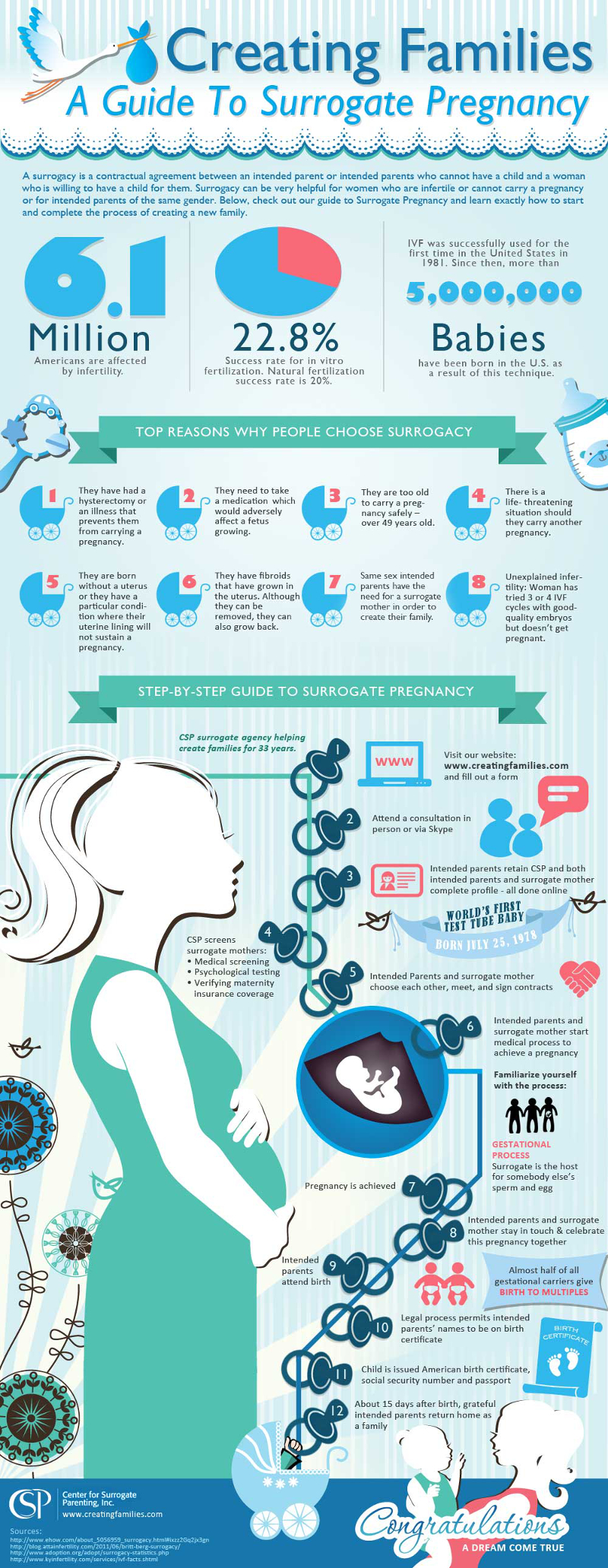Surrogacy and gestational carrying are becoming more and more popular as increasing numbers of women are beginning to be unable to safely carry their babies. There are two main options to consider when couples are looking into having another woman carry their baby, surrogacy or gestational carrying. Below are the differences associated with these forms of birth.
Surrogacy
With the use of surrogacy, a couple is able to use reproduction technology to have a pregnancy through another woman or couple. In the traditional sense, the surrogate will produce the egg and carry the baby and the sperm will be taken from a known or unknown sperm donor. This method of pregnancy is more prevalent than the latter due to its increasing popularity in television shows and in the lives of everyday people. There are other factors to consider when entering surrogacy such as legal matters. Once the baby has been born, the father who had used his sperm will be the legal birth father, but the mother will need to file an adoption petition in order to be accepted as the legal mother of the child. The majority of surrogate agencies will assist you with filling out legal paperwork stating that you will be the legal parent of the child once the mother has given birth.
Gestational Surrogacy
This method of pregnancy is in its earlier stages of development as it is a result of in vitro fertilization (IVF). When a couple decides to use a gestational carrier, the carrier will house the fetus during the pregnancy but she is not the sole egg contributor. Instead, doctors will use the egg and sperm from the couple looking to have the baby. The egg and sperm will be fertilized outside of the body and grown into an embryo. Once this stage has been completed, the doctors will then implant the embryo into the gestational carrier’s uterus. There have also been cases where the egg or sperm have been acquired from an anonymous egg donor. The majority of couples that decide to work with gestational carriers do so because the woman has medical conditions preventing her from safely carrying a baby.
Having the ability to have a child is an important step in life and with the help of technological developments, individuals are provided with the opportunity to become parents, even if they are physically unable to.
